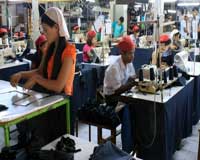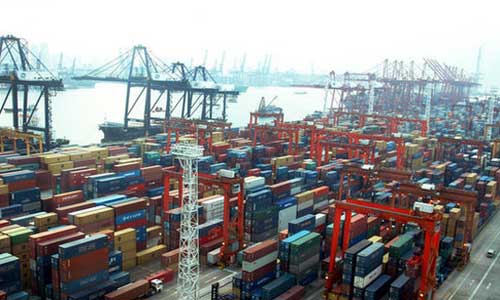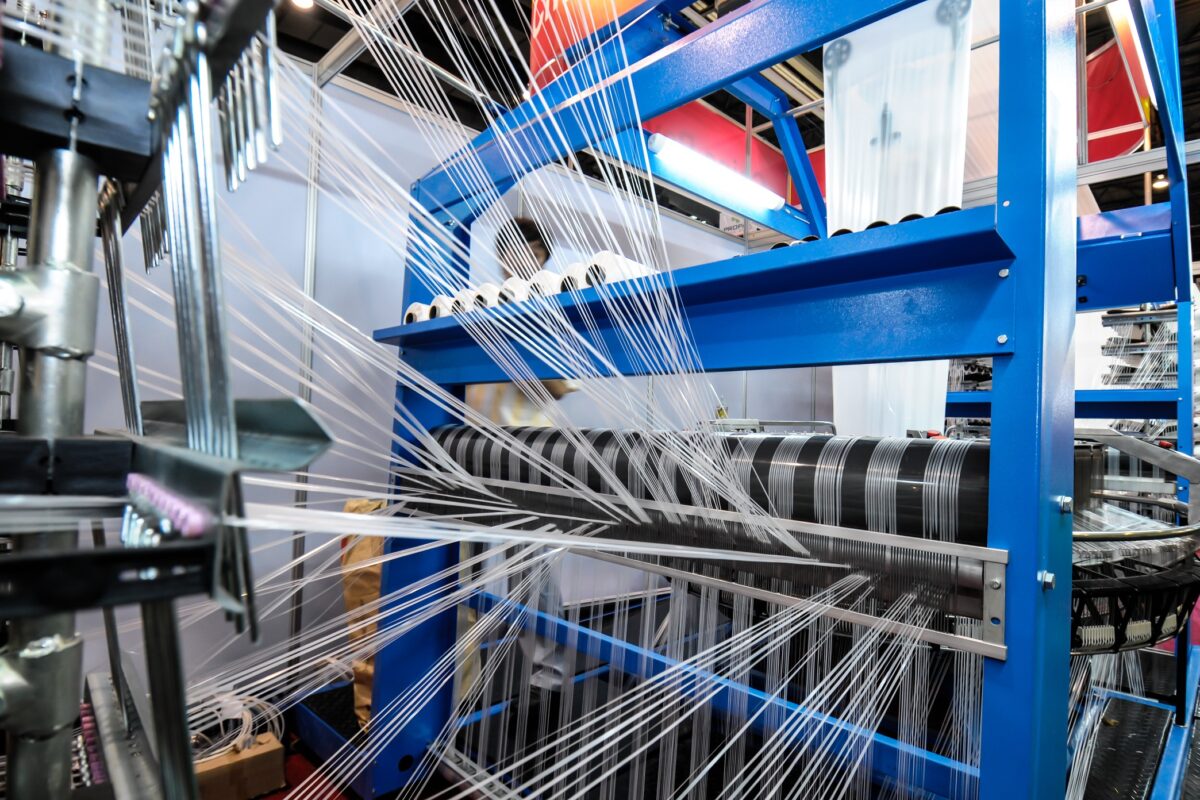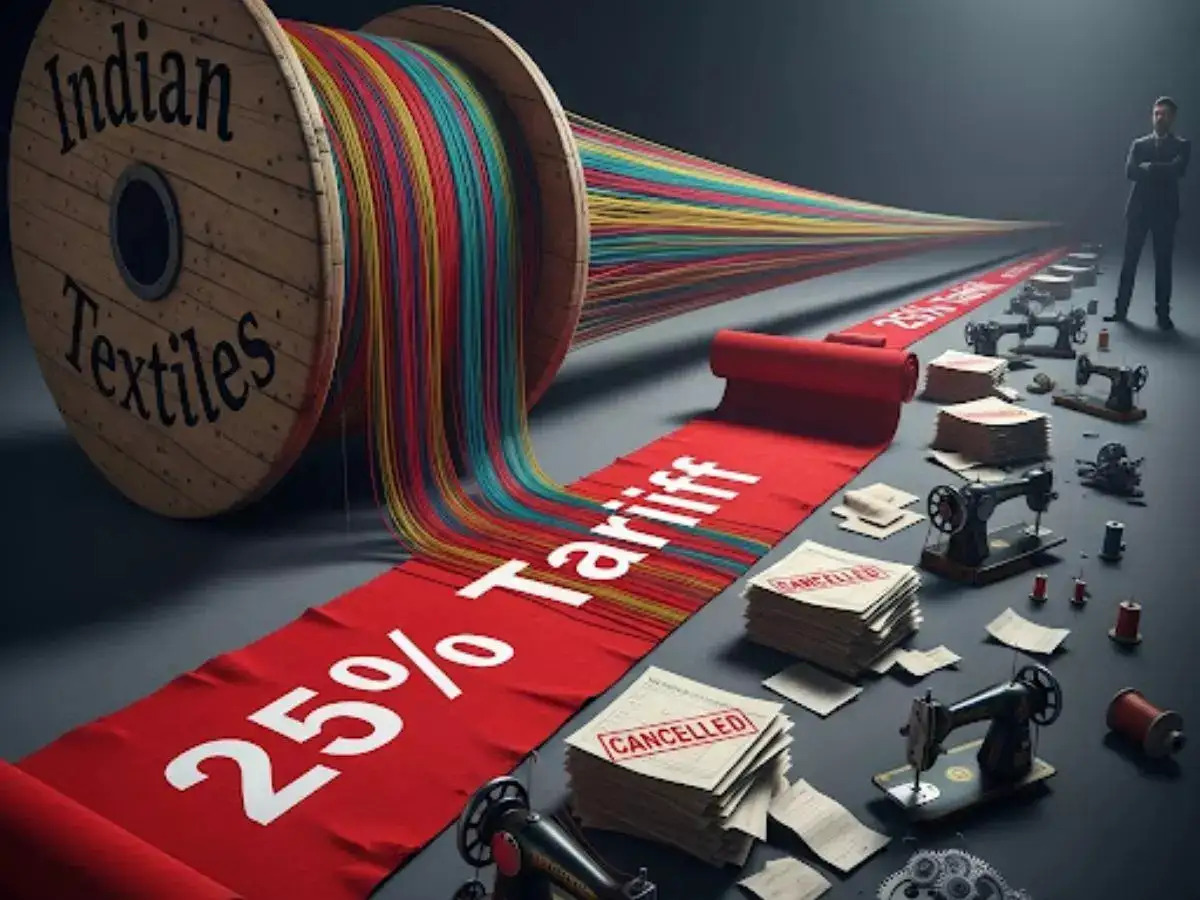FW
The Center for the Advancement of Science in Space (CASIS) has announced a cotton sustainability challenge. Researchers and innovators are invited to propose solutions to improve crop production on earth. Funding will be provided to scientists and researchers who can come up with ways to make cotton farming more effective and sustainable.
Cotton sustainability solutions may include projects in plant biology, water technology or remote sensing technologies. The challenge will leverage a broad range of disciplines to find breakthrough solutions that can be implemented affordably and benefit the cotton production community.
Researchers are encouraged to submit concepts focused on, but not limited to fluid dynamics, fluid flow, cotton or plant germination, different cultivars of cotton genetics, water uptake and gene expression. Data generated from research experiments selected will be provided to the public with the hope that the discoveries made can be leveraged by other researchers and product developers.
Cotton is a natural plant fiber produced in many countries and one of the most important raw materials required for the production of textiles and clothing. Cotton cultivation requires sustainable access to natural resources like water that are increasingly threatened. Many of the consumer products in use today, from T-shirts, to jeans, to bed sheets, to coffee filters, are derived from cotton.
Puma is building an intelligent warehouse that can take decisions. A robot is being tested for efficiency, stability and consistency in daily use. The robot called Toru can provide precise access to individual objects, and not just standardised loading units like trays or boxes. The adaptive picker arms can grasp different cue-shaped objects – from a small paperback book to a shoe box or a heavy dictionary – and then place the object on its shelf and bring it directly to the shipping station.
Thanks to cameras, computer vision, numerous sensors, and the use of artificial intelligence, the robot can perceive and interpret its environment and make decisions on that basis. The hardware, which is equipped with conveyor technology, is based on elements which have been proven to work in similar working environments with success. The software that connects the technology with the sensors makes the robot perception-controlled.
Puma is a German multinational designer and manufacturer of athletic and casual footwear, apparel and accessories. The cooperation between man and machine is ensured with numerous sensors on the robot. If Toru gets too close to someone, it reduces its speed and then stops its movements. Toru doesn't need the warehouse lighting, as it has integrated headlights and can light its work environment itself.
For the second quarter Kornit Digital’s GGAP gross profit increased 12.6 per cent. Non-GAAP gross profit in the second quarter was 49.1 per cent of sales compared with 49.5 per cent of sales in the prior-year. On a non-GAAP basis, Kornit’s sales were up 25.3 per cent compared with the prior-year level. Higher revenues were due to an increase across all revenue sources, most notably services which included an increase in system upgrades.
Kornit is a provider of digital printing solutions for the global printed textile industry. Higher profitability on a non-GAAP basis was the result of 25.3 per cent revenue growth year-over-year, improved gross margin, and improved operating cost efficiencies which were reflected in lower operating expenses as a percentage of sales based on higher revenue levels.
The printed textile market continues to evolve, demanding faster turnaround times and greater options. This trend has continued to drive demand for Kornit’s industrial systems, while high customer utilization rates expand the usage for its inks and consumables. Its strong first half results with 27 per cent non-GAAP revenue growth reflect the market success of its products that support this ongoing evolution in the supply chain.
The company also recognized substantial operating leverage in the second quarter as its global infrastructure investments are now running below the pace of revenue growth. This led to a 500 basis point expansion in its non-GAAP operating margin which, combined with its revenue growth, nearly tripled its non-GAAP operating profit compared to the second quarter of 2016.
Currently, 9,818 industrial units are active in Iran’s textile and apparel industries, constituting 11 per cent of all industrial entities in the country. These units have created more than 2,90,000 direct jobs, accounting for 13 per cent of all industrial jobs in Iran.
Clothing’s share was 4.5 per cent in Iranian families’ spending in fiscal 2015-16. Iran’s per capita apparel consumption is lower than the global average. With the aim of limiting imports, boosting domestic production and making the price of Iranian clothing more competitive, the country is now planning to set up a new apparel industrial town. Some 45 hectares of land have been bought for the new apparel industrial park. The hope is that such an apparel industrial park will be highly beneficial as it will lead to transfer of know-how, increase in quality and lowered production costs.
The country has mandated foreign representatives, branches and distributors of apparel in Iran who seek business licenses to produce goods worth 20 per cent of their import value inside Iran and to export at least 50 per cent of this domestic production. The initiative is aimed at increasing domestic production, creating jobs and reviving Iran’s aging apparel industry.
Production of cotton yarn in India declined 1.8 per cent in 2016-17. Exports of cotton yarn fell 7.9 per cent. This was due to a 22.7 per cent fall in exports to China, which is India’s largest cotton yarn market but Chinese fabric manufacturers preferred to purchase local cotton yarn instead of importing yarn from other countries. Nevertheless, there was a 4.1 per cent increase in exports to countries other than China.
Demonetisation also affected production of cotton yarn. The textile industry is highly unorganised and wages are largely in cash. Due to the cash crunch in the country, manufacturers were unable to pay wages which resulted in laborers’ not reporting to work. Demonetisation also curtailed consumer spending, resulting in a dip in the sale of apparels and other end-products of the textile industry. This led to a fall in demand in the entire value chain.
An increase in price of the industry’s main raw material, cotton, also caused problems for the industry. Annual average prices of medium staple cotton were up 19 per cent year-on-year. Spinning mills were pushed into losses as the rise in raw material prices could not be fully transferred onto the customers. This pushed cotton yarn manufacturers into losses. Hence, yarn manufacturers cut production in order to minimise losses.
India’s first special storage facility for handling raw cotton was launched at the Dakshin Bharat Gateway Container Terminal, the Thoothukudi VOC port. An initial step towards establishing the ambitious Free Trade Warehousing Zone (FGTWZ) at the Thoothukudi Port will reintroduce cotton trade in a big way, said VOC chairman S Anantha Chandra Bose.
The facility set up by the port estate can house around 500, Equivalent Units (TEU) of 40 foot container at the custom bonded area of Dakshin Bharat Gateway Container Terminal in berth number 8. International traders can stock raw cotton at the facility for a period of 30 days free of cost.
The raw cotton storage facility will lead to commissioning of the FGTWZ at Thoothukudi Port, with world-class infrastructure for warehousing of raw cotton, state-of-the-art equipment, transportation and handling facilities, commercial office space, water, power, communications and connectivity, and one-stop clearance of import and export formality. The facility would help textile mills to get cotton at international price within a short span of one week, thereby increasing the yarn production in Tamil Nadu. The facility would have a rippling effect by strengthening the textile value chain particularly knitting, weaving, garment, textile processing, apparel sector etc. The initiative will also help spinning mill owners to buy cotton at competitive prices in the Indian market.
M Senthil Kumar, Chairman, Southern India Mills’ Association (SIMA) points out, the price of cotton was highly volatile and many industries in the small and medium scale category could not sustain the variations as it takes at least a month to buy cotton consignment from abroad.
The turnover of German textile and clothing sector for the first five months grew by 0.9 per cent. In all there were 0.6 per cent more people employed in the sectors than in the same period of 2016.
Effective working hours in May increased in textiles by 9.4 per cent and in clothing by 5.1 per cent. Domestic production of textiles improved in May by 4.1 per cent. However, the clothing sector decreased its production by 2.3 per cent as against 2016. Orders for textile segment increased end of May by 15.9 per cent as against 2016. The increase in orders for the clothing segment was 1.8 per cent. Producer prices were practically stable in both segments. As of May prices in the textile sector were up 0.4 per cent, in clothing 0.2 per cent.
Turnover of clothiers increased by 23.3 per cent. As of May turnover at specialist retailers sank by 0.3 per cent. This is in contrast to German retailers who registered a plus of 3.6 per cent. Foreign trade increased in May for the sectors, particularly in the clothing sector by 13.5 per cent whereas in textiles it resulted only a plus of 1.4 per cent, meaning a plus for both segments of 8.3 per cent. The clothing sector was able to increase considerably its deliveries to Switzerland.
Cambodia’s garment exports grew just four per cent in the first six months of the year. In the same period last year, growth was nine per cent. The slowdown may be due to a 2.3 per cent drop in exports to the United States amid stronger competition from Vietnam and Myanmar.
Increases in Cambodia’s minimum wage were also a factor, leading to higher production costs. Cambodia’s new minimum wage is more than double the minimum wage for garment workers in Bangladesh. Cambodia’s exporters may face more challenges ahead. With the World Bank’s upgrade of the economy last year to lower-middle income country status, Cambodia will no longer receive preferential trade access in the European Union over the next three years.
Foreign direct investment in the garment sector dropped by about 30 per cent in the first quarter of 2017 compared to a five per cent drop in the same period last year. Cambodia is the fifth biggest supplier of garment and textile products to the European Union. It’s behind China, Bangladesh, Turkey and India.
Cambodia’s garment exports to the EU grew by 14 per cent in 2016. The country’s growth in the EU market was largely the result of preferential treatment under the Everything But Arms agreement, which allows its garment products to enter the EU market duty-free due to its status on the list of least developed countries.
The Modern Ethnic Design Center (MEDC) in Cambodia has been teaching students how to tap into the international market, blending Khmer and European design. Throughout the last year, 14 Cambodian students have spent time learning to adapt traditional Cambodian fabrics and patterns for the European market, employ sustainable production practices and work with local suppliers.
About half the students had been working in garment or textile industry already. They are shown how to simplify patterns so they appeal to the foreigner. They incorporate patterns inspired by Angkor Wat and dragon scales into modern products.
The MEDC also helps students adjust their products to fit their target market. Since naturally dyed fabrics are often above the local price range, they are encouraged to tailor their collections for 25- to 45-year-old foreigners. Some of them in future hope to bring their designs to the US by selling on Amazon.
Students are also given advice on how to capitalize on a growing international demand for unique, sustainably sourced products. MEDC focuses on using traditional Cambodian weaving methods of silk and cotton, as well as patterns such as ikat (a dyeing technique), in the loose fitting, casual chic styles preferred in Europe at the moment.
"Hong Kong’s textile exports seen degrowth lately. In 2016, it fell 13 per cent and now another 7 per cent in the first five months of 2017. Re-exports, accounting for more than 99 per cent of total textiles exports, also fell 7 per cent, while domestic exports rose 2 per cent. With more than three-quarters of the textile re-exports originating from Chinese mainland, Hong Kong’s re-exports of textiles of China origin registered a decrease of 6 per cent in January-May 2017."

Hong Kong’s textile exports seen degrowth lately. In 2016, it fell 13 per cent and now another 7 per cent in the first five months of 2017. Re-exports, accounting for more than 99 per cent of total textiles exports, also fell 7 per cent, while domestic exports rose 2 per cent. With more than three-quarters of the textile re-exports originating from Chinese mainland, Hong Kong’s re-exports of textiles of China origin registered a decrease of 6 per cent in January-May 2017.

Asia accounted for 93 per cent of Hong Kong’s textile exports in the first five monthsof 2017. Other major export markets of Hong Kong textiles include Vietnam, Bangladesh, Cambodia, Indonesia, Sri Lanka, the US, India, Thailand and the Philippines. In particular because of Vietnam’s cheap labour compared to neighbouring countries and WTO membership, many foreign investors, including those from Hong Kong, have set up garment factories there. This gives rise to sustained demand for textile imports, making Vietnam the second largest market for Hong Kong’s textile exports, after the Chinese mainland. Talking about products, Hong Kong’s exports of knitted or crocheted fabrics, textile yarns, woven fabrics, textile made-up and floor coverings registered respective declines of 3 per cent-64 per cent in the first five months of 2017. However, finishing accessories and special yarns and fabrics increased by 3 per cent and 2 per cent, respectively, in the first five months of 2017.
Industry trends
With rising labour costs, volatile raw material prices and stringent environmental regulations on the Chinese mainland, many Hong Kong's textiles manufacturers have relocated their production facilities to other South-east Asian countries, like Vietnam, Cambodia, Myanmar and Bangladesh. A few companies have even set up offshore production in Latin America (e.g. Mexico) and Africa (e.g. Nigeria) to take advantage of preferential treatments allowed by regional trade agreements such as North American Free Trade Agreement (NAFTA) and the EU’s GSP scheme.
Product trends
Among various kinds of fibres, cotton remains the most preferred material for consumers. Cotton-rich apparel continues to attract European consumers, while consumers in China, India and Japan agree that cotton and cotton blend are the most comfortable, authentic and sustainable, compared to other man-made fibres. Microfibres are attracting textiles manufacturers as they are light in weight and have superior performance in keeping warm. These days more and more breathable, flexible, anti-bacterial, anti-ultraviolet, wrinkle-free, water-resistant and eco-friendly materials are invented and marketed. For instance, TENCEL® invented by Lenzing Group is a kind of lyocell fibre that possesses several functional advantages over cotton, while Salvatore Ferragamo has pioneered the use of sustainable fabrics made from citrus fruit.
Technovation
Technology and innovation are yet again set to rule the textile world. Fancy weaves and prints will give more flexibility in the choice of manufacturing processes, while digital prints, as well as artisanal decoration, will make textiles more malleable. Additionally, hand-crafted excellence, original visuals and exceptional handles will continue to be sought after, given consumers’ ever-growing appetite for uniqueness and distinctiveness. Solar-powered handbag made of a textile photovoltaic surface that powers a battery inside to charge a mobile phone and ‘climate costumes’ that sense changes in carbon emission with light patterns using conductive thread and LEDs are just some examples of how technical textiles are shaping the future textiles industry. As wearable technologies are becoming more accessible, technical textiles are widely applied over a wide range of industries such as automobile, aerospace, architecture, healthcare and sports. Luminescent and heated garments as well as smart knee bandages are cases in point.
Eco-consciousness
To comply with global trends of green manufacturing, more textile corporations have adopted the bluesign® standard – one of the industry’s major voluntary standards for environmental sustainability. Consumers in West Europe, the US and Japan, are stringent about the environmentally friendly properties of biodegradable natural fibres like organic cotton, soy fibre and ahimsa silk. To keep up with this trend, manufacturers have also expanded their production of green textiles by utilising more bio-degradable materials and environmentally-friendly manufacturing processes, including high-efficiency management practices, process control, special processes, and recycling of wastewater.
Product safety
Besides going green, companies are paying utmost attention on product safety. For instance, a number of disqualified apparel fibres consisting of unsatisfactory levels of pH value, formaldehyde content and banned azo dyes have been reported on the Chinese mainland in recent years. In fact, Chinese consumers are increasingly in favour of foreign apparel brands, which usually guarantee product safety. Meanwhile, in traditional markets, for example, the EU’s Rapid Alert System for Non-Food Products (RAPEX) revealed that textiles, clothing and fashion items were the third most common product category notified (behind only toys and motor vehicles), representing 13 per cent of the total number of notifications of dangerous products in 2016.












